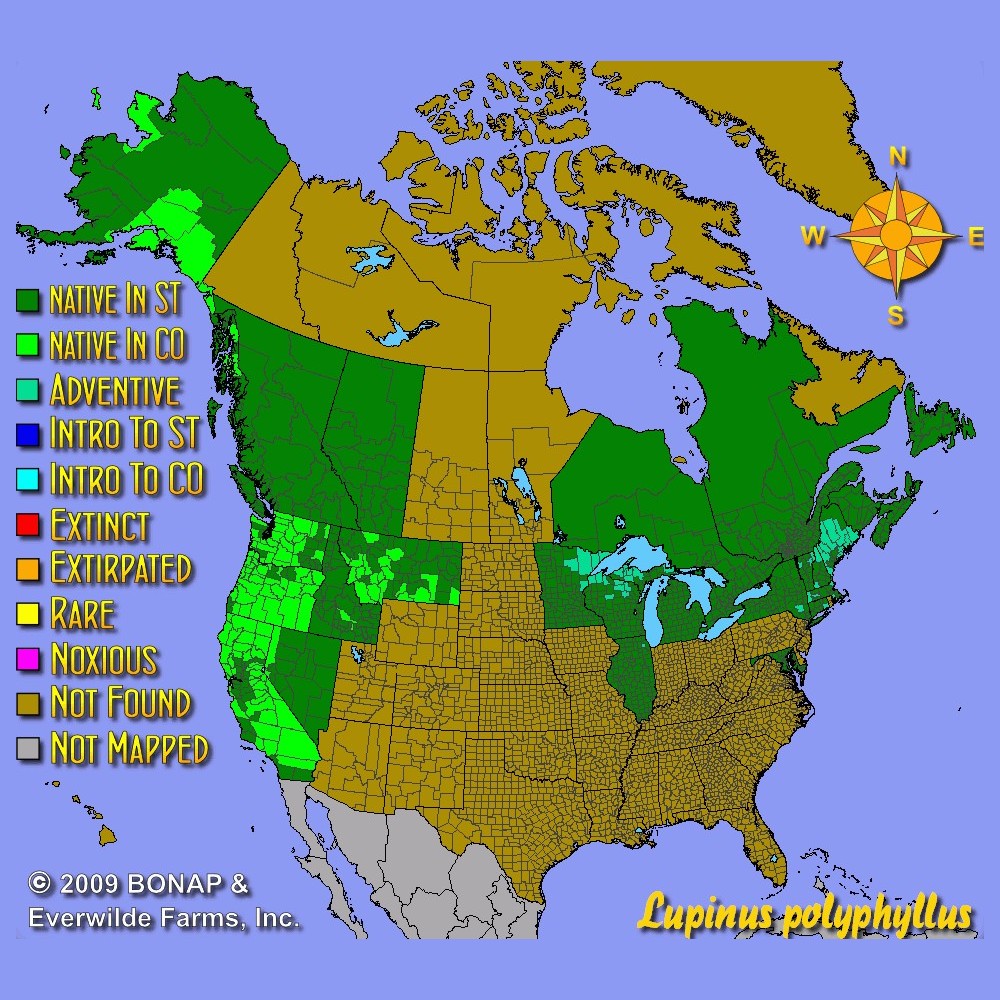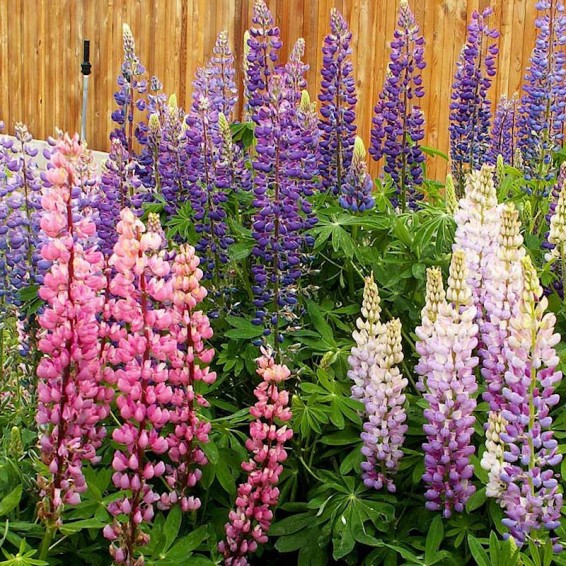Russell Lupine Seeds
- HOW TO GROW
- FAST FACTS
- REVIEWS
HOW TO GROW
Sowing: To soften the hard coating on these Russell Lupine seeds, rub them lightly with sandpaper or soak them in 180 degrees F water overnight before sowing. Sow them in early spring, planting 1/2" deep. Keep the soil lightly moist until germination.
Growing: These seedlings grow very slowly and are rather fragile. Water them occasionally and protect from freezing temperatures. Though mature plants tolerate drought conditions well, provide water occasionally in very dry weather. This plant can be poisonous to livestock if present in excessive amounts. These plants resent having their roots disturbed.
Harvesting: For cut flowers, choose stems with flowers that have just opened. Strip the foliage that will fall below the water level, and place in water immediately.
Seed Saving: As the seed pods develop, watch them carefully. As soon as they ripen fully they will split and drop their seed. When the pods begin to turn brown, remove them and spread them out to dry. Remove the Lupinus Polyphyllus seed from the pods and store it in a cool, dry place. Keep in mind that these Russell Lupine seeds are highly poisonous.
FAST FACTS
Common Names: Streamside Lupine, Bigleaf Lupine, Garden Lupine, Large-leaved Lupine, Washington Lupine, altramuz perenne
Latin Name: Lupinus polyphyllus
Species Origin: US Native Wildflower
Type: Native Wildflowers
Life Cycle: Perennial
USDA Zones: 1, 2, 3, 4, 5, 6, 7, 8, 9, 10, 11
US Regions: California, Mountain, Arid/Desert, Plains/Texas, Midwest, Northern, Northeast, Southeast
Seeds per Ounce: 1,100
Stratification: No Stratification
Germination Ease: No Stratification
Sunlight: Full Sun
Height: 24 Inches
Color: Mixed, Pink, Red, Yellow, Blue
Bloom Season: Blooms Late Spring, Blooms Early Summer
Uses: Deer Resistant
Russell Lupine
This is one seed that is fun, I do seed balls or bombs. You have to use sand paper first and roll them around in pan and put them with Vermont compost and potters clay in little balls. Place them around your yard now in winter. Them in spring, Boom!
5 stars for now...
I am planting these this long holiday weekend, so I'll know more in a few weeks. I love this site, love the buying experience and the quick shipping. My new place for wildflower seeds!
Lupine seeds
We've had great luck with your lupine seeds in our restoration project.
DESCRIPTION

HOW TO GROW
Sowing: To soften the hard coating on these Russell Lupine seeds, rub them lightly with sandpaper or soak them in 180 degrees F water overnight before sowing. Sow them in early spring, planting 1/2" deep. Keep the soil lightly moist until germination.
Growing: These seedlings grow very slowly and are rather fragile. Water them occasionally and protect from freezing temperatures. Though mature plants tolerate drought conditions well, provide water occasionally in very dry weather. This plant can be poisonous to livestock if present in excessive amounts. These plants resent having their roots disturbed.
Harvesting: For cut flowers, choose stems with flowers that have just opened. Strip the foliage that will fall below the water level, and place in water immediately.
Seed Saving: As the seed pods develop, watch them carefully. As soon as they ripen fully they will split and drop their seed. When the pods begin to turn brown, remove them and spread them out to dry. Remove the Lupinus Polyphyllus seed from the pods and store it in a cool, dry place. Keep in mind that these Russell Lupine seeds are highly poisonous.
FAST FACTS
Common Names: Streamside Lupine, Bigleaf Lupine, Garden Lupine, Large-leaved Lupine, Washington Lupine, altramuz perenne
Latin Name: Lupinus polyphyllus
Species Origin: US Native Wildflower
Type: Native Wildflowers
Life Cycle: Perennial
USDA Zones: 1, 2, 3, 4, 5, 6, 7, 8, 9, 10, 11
US Regions: California, Mountain, Arid/Desert, Plains/Texas, Midwest, Northern, Northeast, Southeast
Seeds per Ounce: 1,100
Stratification: No Stratification
Germination Ease: No Stratification
Sunlight: Full Sun
Height: 24 Inches
Color: Mixed, Pink, Red, Yellow, Blue
Bloom Season: Blooms Late Spring, Blooms Early Summer
Uses: Deer Resistant
Reviews
Review
Russell Lupine
This is one seed that is fun, I do seed balls or bombs. You have to use sand paper first and roll them around in pan and put them with Vermont compost and potters clay in little balls. Place them around your yard now in winter. Them in spring, Boom!
Review
5 stars for now...
I am planting these this long holiday weekend, so I'll know more in a few weeks. I love this site, love the buying experience and the quick shipping. My new place for wildflower seeds!
Review
Lupine seeds
We've had great luck with your lupine seeds in our restoration project.





